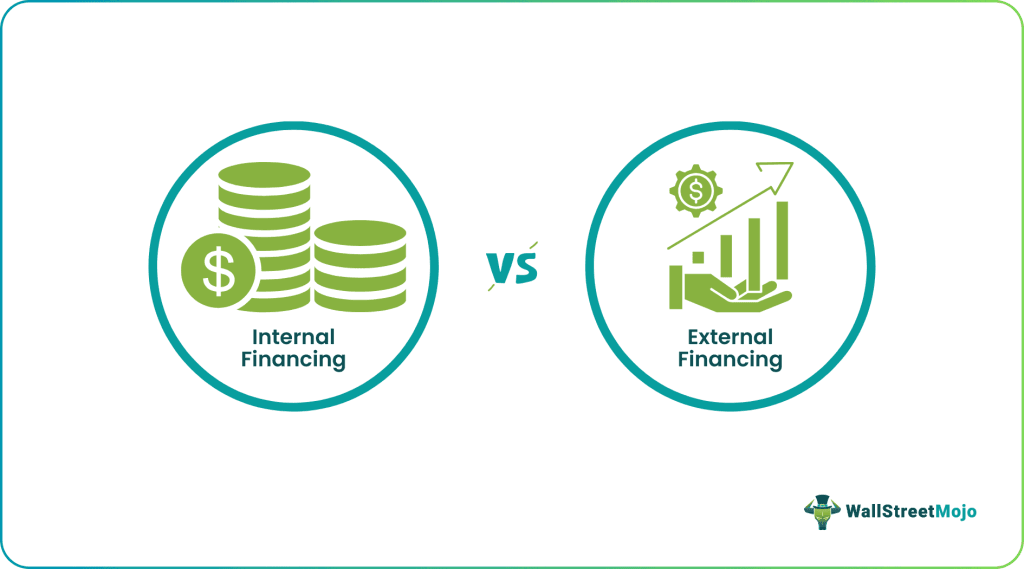Internal vs External Financing | Top 7 Differences (Infographics)
Table Of Contents
Differences Between Internal and External Financing
To perpetuate, a business needs funding. It can be from its resources, or it can be sourced from somewhere else. When a company sources the funding from its sources, i.e., its assets, from its profits, we would call it an internal source of financing. On the other hand, when a company needs enormous money, and only internal sources are not enough, they take loans from banks or other financial institutions.
If we make a quick comparison between these two, we would see that the importance of both of them is similar. However, a company would get greater leverage (and save on taxes) if it takes debt from outside.
In this article, we will talk about both of these sources of finance and do a comparative analysis of internal and external financing sources.

Internal vs. External Financing Infographics
There are a few differences between internal vs. external financing. Here’s the snapshot below –

Internal vs. External Financing Differences
Here are the key differences between internal financing and external financing –
- Internal sources of finance are sources inside the business On the other hand, external sources of finance are sources outside the business.
- Companies look for funding internally when the fund requirement is quite low. In this case, external sources of financing the fund requirement are usually quite huge.
- When a company sources the funding internally, the cost of capital is pretty low. In the case of external sources of financing, the cost of capital is medium to high.
- Internal sources of funding don’t require any collateral. But external sources of funding require collateral (or transfer of ownership).
- Popular examples of internal sources of financing are profits, retained earnings, etc. Popular examples of external financing are equity financing debt financing, term loan financing, etc.
Comparison between Internal and External Financing (Table)
| Key Points | Internal Financing | External Financing |
|---|---|---|
| 1. Inherent meaning | Finance is generated within the business. | The finance is sourced from outside of the business. |
| 2. Application | Internal sources are used when the requirement of funding is limited. | External sources are used when the requirement of funding is huge. |
| 3. Cost of Capital | Pretty low. | Medium to pretty high. |
| 4. Why? | The idea is to limit the business within a boundary (maybe not to grow so big). | The idea is to expand from local to national to global. |
| 5. Amount sourced | Low to medium. | Medium to huge. |
| 6. Collateral | No collateral is required. | Most of the time, collateral is required (especially when the amount is huge). |
| 7. Examples | Retained earnings, reserves, profits, assets of the company; | Equity financing, debt financing, etc.; |
Conclusion
Internal and external sources of finance are both critical, but the companies should know where to use what.
The right approach uses the right proportion of internal and external financing. If the company funds too much from its resources, it would be difficult for the company to expand the business. At the same time, if the company depends too much on external sources of finance, then the cost of capital would be huge. So, the company needs to know how to fund its immediate or long-term requirements.
